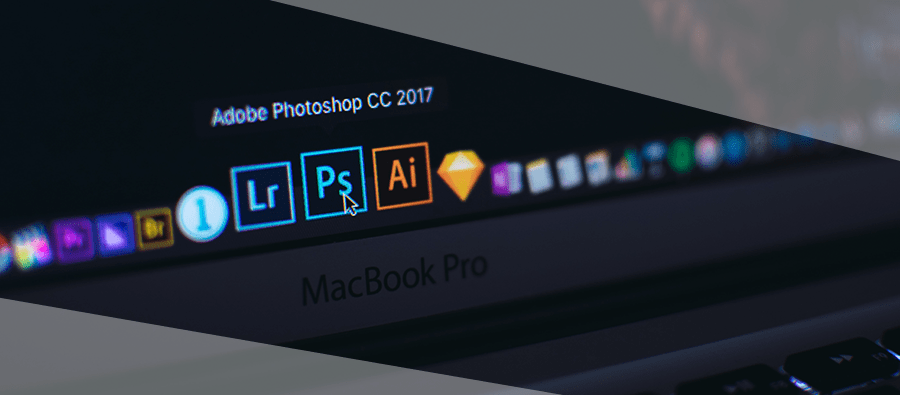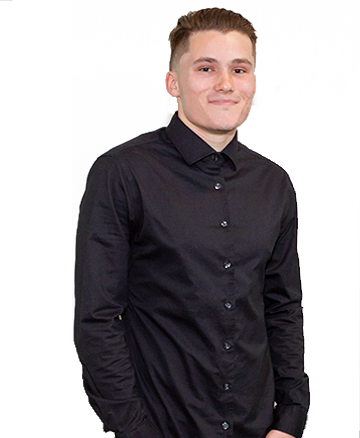No great artist, designer, or any other form of creative being is born with a natural, instinctive ability to create masterpieces – well, maybe Picasso and Kanye West. While some people are gifted with creative minds, the majority of us have to work a little bit harder in order to develop the skills required to create works of art in our own fields.
As someone with a more analytical, 2 + 2 = 4, type of brain, it took me years to build my creative skills up to a point where I felt confident in presenting pieces of my design work. Even after years of experience, doing so is still very nerve-racking. Five or ten years down the road, I’m sure I will still be shaking in my boots any time I send a design into creative review. But one thing I can assure you is that with hard work and a commitment to growth, you can build those design skills and learn to be more creative!
Here are some tips to build your design skills and turn your analytical mind into a creative one:
Get familiar with a creative software program
First and foremost, familiarize yourself with the fundamentals of your preferred creative software program. Here at Pulse, we use Photoshop for digital images, Illustrator for print images, and Premiere Pro for video – all by Adobe – and we highly recommend all of these programs due to the vast amount of tools they offer. Play around with the tools within the program of your choice, watch tutorials, read “how to” articles, try to recreate your favorite pieces, maybe even take some paid courses. These are all great ways to get some hands-on practice and start to develop your design skills.
Be observant and take notes
Simply observing the world around you is an excellent way to gain inspiration for your own creativity. Whether it’s the packaging on a product you bought, a commercial you saw on TV, a billboard you passed by on the freeway, or even a menu you ordered from, design is everywhere. Take pictures, videos, or mental notes of any work that catches your eye. From here, you can take this inspiration and continue to practice on your creative software program.
Start with small pieces
If an opportunity arises where you have the chance to create even the smallest graphic or video, take it! Give any little piece a shot, even if it might take as little time as an hour or less. If you work for a company that allows you to express your creative ideas at any position, even as an intern or entry level employee – like Pulse *wink wink* – offer a helping hand by asking your coworkers if there are any small pieces of design work that you can take off their plate. Every small piece of work is a step forward in improving your design skills.
Take risks
In terms of creativity, one of the biggest mistakes you can make is confining yourself to a small box and placing any limits on yourself. As cliché as it may sound, being creative means thinking outside of the box and taking risks. Don’t be conservative with your work. Go with what simply feels right. If your idea seems like it might be too wild, ask a colleague for their thoughts before committing to it. Coming from an overthinker, DON’T OVERTHINK IT. You might find yourself bombarded with all kinds of crazy ideas for a design, but sometimes all it takes is a quick discussion with a colleague to enable you to commit to an idea.
Ask for constructive criticism
Following up on the last tip, not only should you accept constructive criticism from your colleagues, but you should also request it! Go out of your way to ask for their thoughts, especially if you have a mentor who is there to help you reach your full potential. Don’t get offended if they recommend making changes to your work. In the end, they are simply there to help you grow and apply yourself to the best of your ability. It may be a bit nerve racking to ask your colleagues to literally criticize your work, but it will expand your mind to new ideas that you may not have thought of before. Eventually, you will compile all kinds of new ideas and will be able to apply them to future projects. Requesting constructive criticism is essential to growing as a creative person.
Create. Create. Create.
Every artist needs to feed their creative desire and, well, create. Even if you may not be inspired in the moment, designate some time throughout your week to practice your design skills. Set weekly goals for what you would like to learn and accomplish within your designated time frame. Even if you are only able to practice for a small amount of time each week, you are still getting better than you were the week prior! And of course, any time you have a spontaneous moment of inspiration, CREATE.
Final thoughts
While practicing and applying your creativity can be a fun and exciting experience, you still must push yourself and put in the work in order to grow! But in the moments you are experiencing any stress or self-doubt – which there will likely be many, unless you’re very lucky – remember that any form of creativity is simply a way of expressing yourself. You are creating a work of art that is a reflection of how you feel at that moment, even if it is simply a graphic for some kind of advertisement.
Creativity takes time, and becoming a good creator takes time. It will take weeks, months, maybe even years before you feel confident in your creative skills, but I can guarantee that all of the practice and patience will pay off in the end. Implement these tips into your life and you will shape your mind into an even more creative one!


